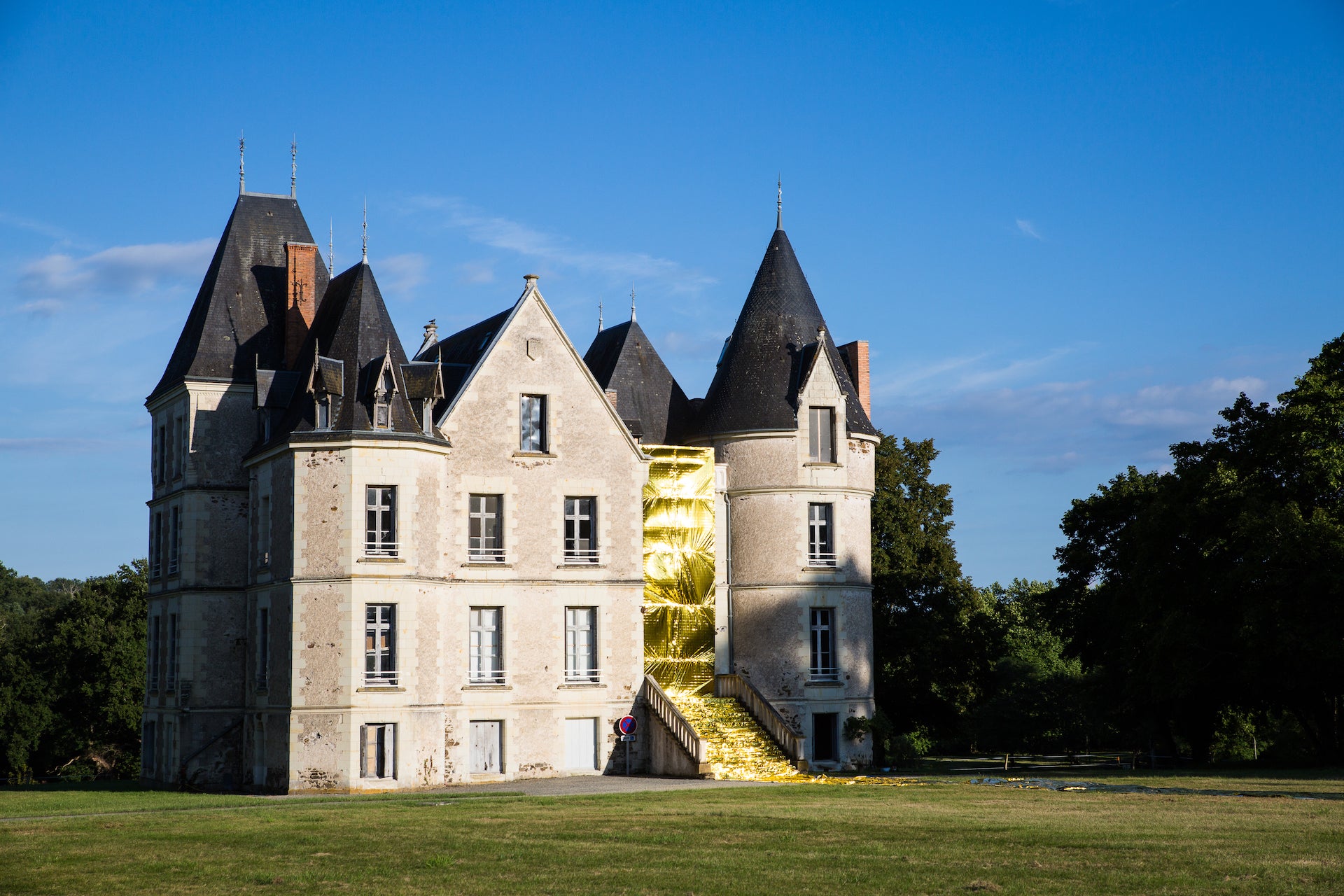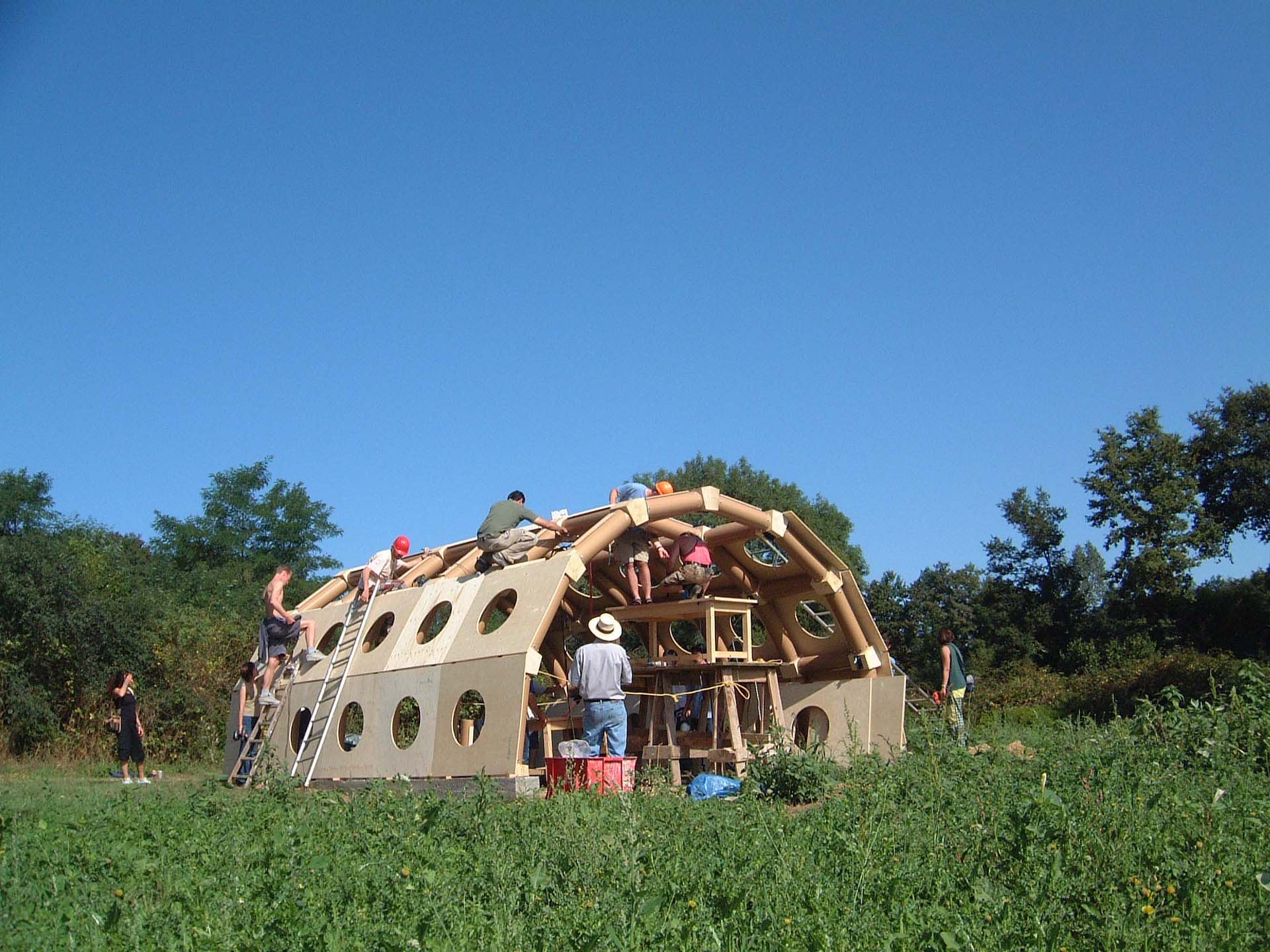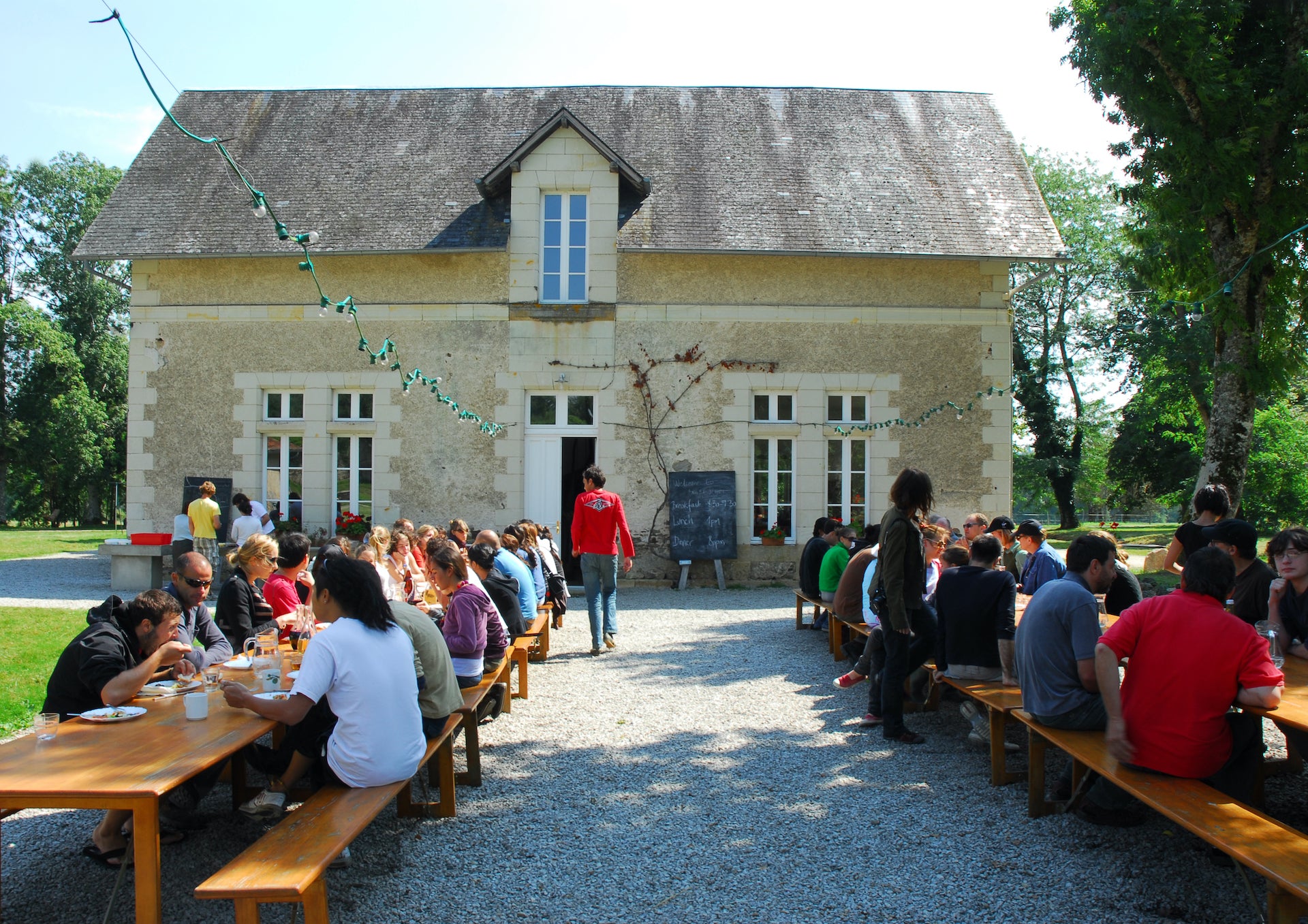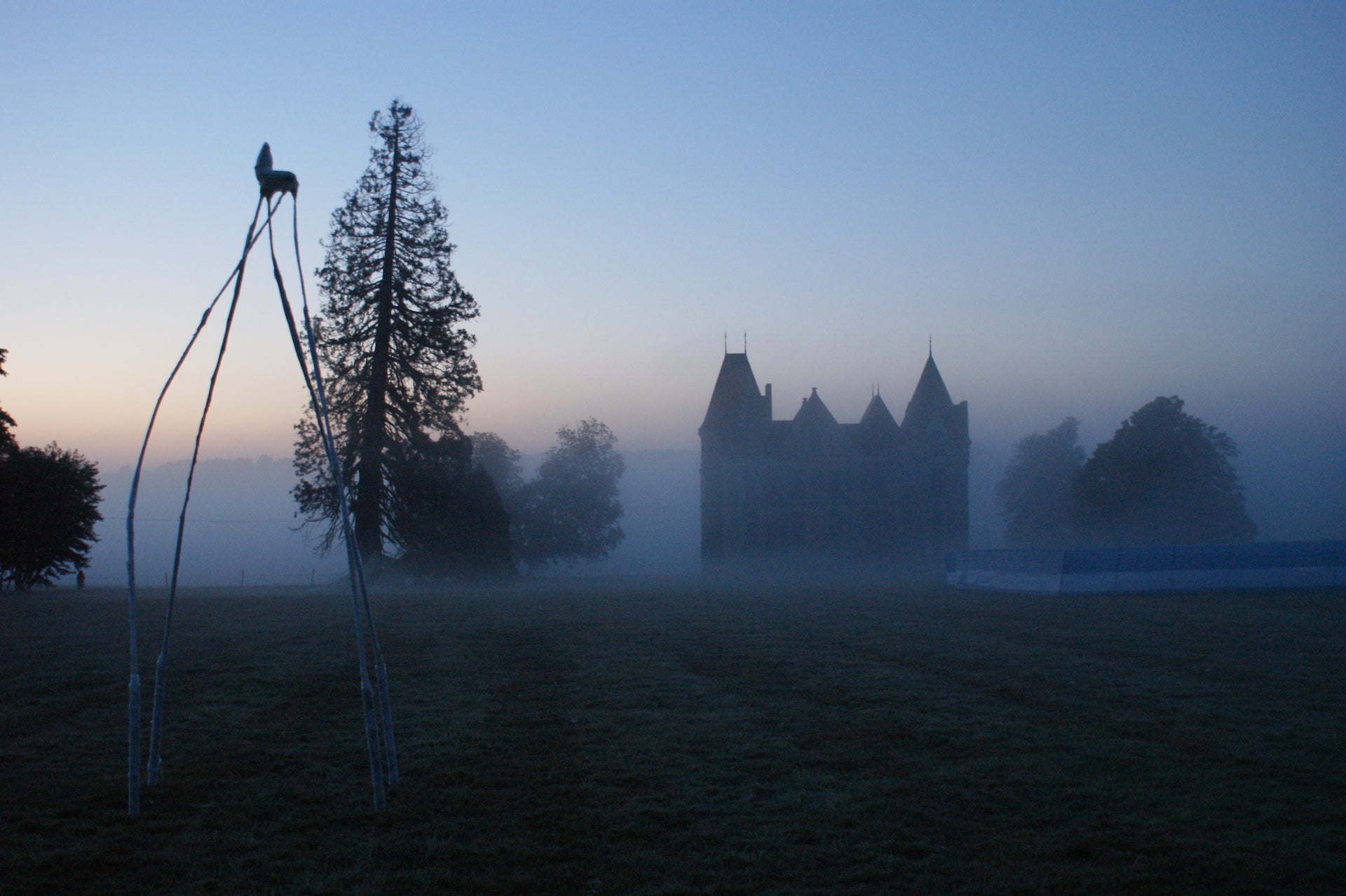VETTED
Alexander von Vegesack
Get to know this extraordinary legend of the design world
For those lucky enough to have spent time at Alexander von Vegesack’s research center for design and architecture, the experience can be profound. Nestled amid a forest in the southwest of France, Domaine de Boisbuchet is a gathering place for the intellectually and artistically curious, where creativity is in conversation with nature. Annual summer workshops on the campus have left a lasting impression on a generation of emerging designers, and artists-in-residence have total access to 150 hectares of pristine beauty—plus studio space, materials, a well-stocked library, and an architectural park.
Alexander’s vision for Boisbuchet was informed by the inventiveness and freedom of his early days living among a community of artists and makers in an old factory in Hamburg. Equally influential was his time as the Founding Executive Director of the Vitra Design Museum, where he programmed countless touring exhibits on design and architecture, published numerous catalogues, and established a respected and financially sound cultural institution from the ground up. He is a recognized collector and authority on design history; museums like the Musée d’Orsay and the Centre Pompidou seek his advice on design shows and collections.
His insights below, like his biography, are compelling, and his plans for the future of Boisbuchet, which include collaborations with top-tier schools like the Rhode Island School of Design and the Massachusetts Institute of Technology, are worth watching out for.

What sparked your interest in design?
I was always fascinated by everyday objects from different cultures. Flea markets were the ideal place to find them and learn from the dealers about their (real or invented) backgrounds.
You founded and led the Vitra Design Museum as Executive Director until 2011. What do you take away from that experience?
Thanks to Rolf Fehlbaum, the CEO of Vitra, I had the freedom to program and organize the museum independently as long as I was able to meet the quality and standards of Vitra and finance the budgets. This experience was extremely helpful for all the projects that followed.
Tell us about Boisbuchet. Where did the idea come from?
I lived in an old factory in Hamburg with a community of international friends creating weird theater pieces, films, pantomimes, meditations, concerts, exhibitions, and a weekend disco. We were always trying to bring our passion projects to life. It was often difficult, but I used a lot of what I learned during that time period for the creation and programming of the Vitra Design Museum in Weil am Rhein and Berlin—as well as for Boisbuchet.

What is the one thing you want people to walk away with after their time at Boisbuchet?
People should leave this place with a mind full of new fantasies and the very real experience of working with their hands and brains together, connected. After sharing many intense experiences with other participants, they should leave with new friends and contacts from all over the world who are part of our growing international community. Ultimately, they should leave with a new perspective on life and their work.
What do you see as the future of design vs. the history of design?
We should downsize our habits and expectations to be more logical and try to merge our needs with the ones of our natural environment. The Japanese culture of permanently refining everyday objects was for centuries a solid attitude in dealing with natural resources. The slow and careful design process creates a beautiful and meaningful lifelong relationship between man and environment.

What is your favorite part of Design Miami?
I enjoy seeing old friends again and making new ones. Besides the classic presentations, I appreciate the opportunity to see serious reflections of a new kind of philosophy, where modest, functional objects are produced with an ecological and economical conscience—similar to the philosophies of the Bauhaus and those that followed during the sixties and eighties. Traveling to Miami for a week also interrupts the nasty European winter weather we are usually experiencing.
Is there something you would like to see more of in the design world?
Professionals whose work focuses on the values we vitally need at the moment, keeping in mind the younger generation and the world they will inherit. I have been greatly moved by the “Fridays for Future” movement.
If you were new to collecting design, where would you start?
I would look for objects that would characterize this moment in time when looking back. To date, I’ve wanted to conceive exhibitions and publications about the evolution of industrial design. But now I would be more interested in which kind of objects do we create when robots and computer programs are defining new parameters in design? Not wanting our creations to be considered useless, would we go back to a new, more craft-focused period to enrich the interiors of our houses and apartments?

What’s on your desk right now?
There is quite a bit of administrative paperwork as Boisbuchet has several new initiatives underway. Besides the usual series of summer workshops that have been taking place for the past 30 years, Boisbuchet is now promoting a new artist-in-residency program that started in July. Our residents have access to our fully equipped ateliers, materials, tools, a design and architecture library, studio spaces, conference rooms, yoga classes, 150 hectares of open space, our architectural park, a lake and a river which runs through the Domaine.
We are also welcoming universities—from MIT, RISD, and the École Nationale Supérieure des Arts Décoratifs in Paris—to experiment on the Domaine with new nature-related technologies. It is a rare opportunity for students in the fields of design and architecture to work outside the confines of a classroom and to work freely with nature in order to develop innovative ideas.
If you could visit any designer (historic or contemporary) in their studio, who would you choose and why?
Leonardo da Vinci. I would try to understand how he was able to develop projects that could easily fit into the 20th century.
Notable memory from Design Miami?
I remember the early years, spending time with Craig Robins and Ambra Medda. It was an inspiring atmosphere full of ideas. Those are the most exciting moments for new endeavors.
Best piece of advice you’ve ever received?
Don’t lose energy competing with others. Instead, create your own project whilst setting your own conditions.
